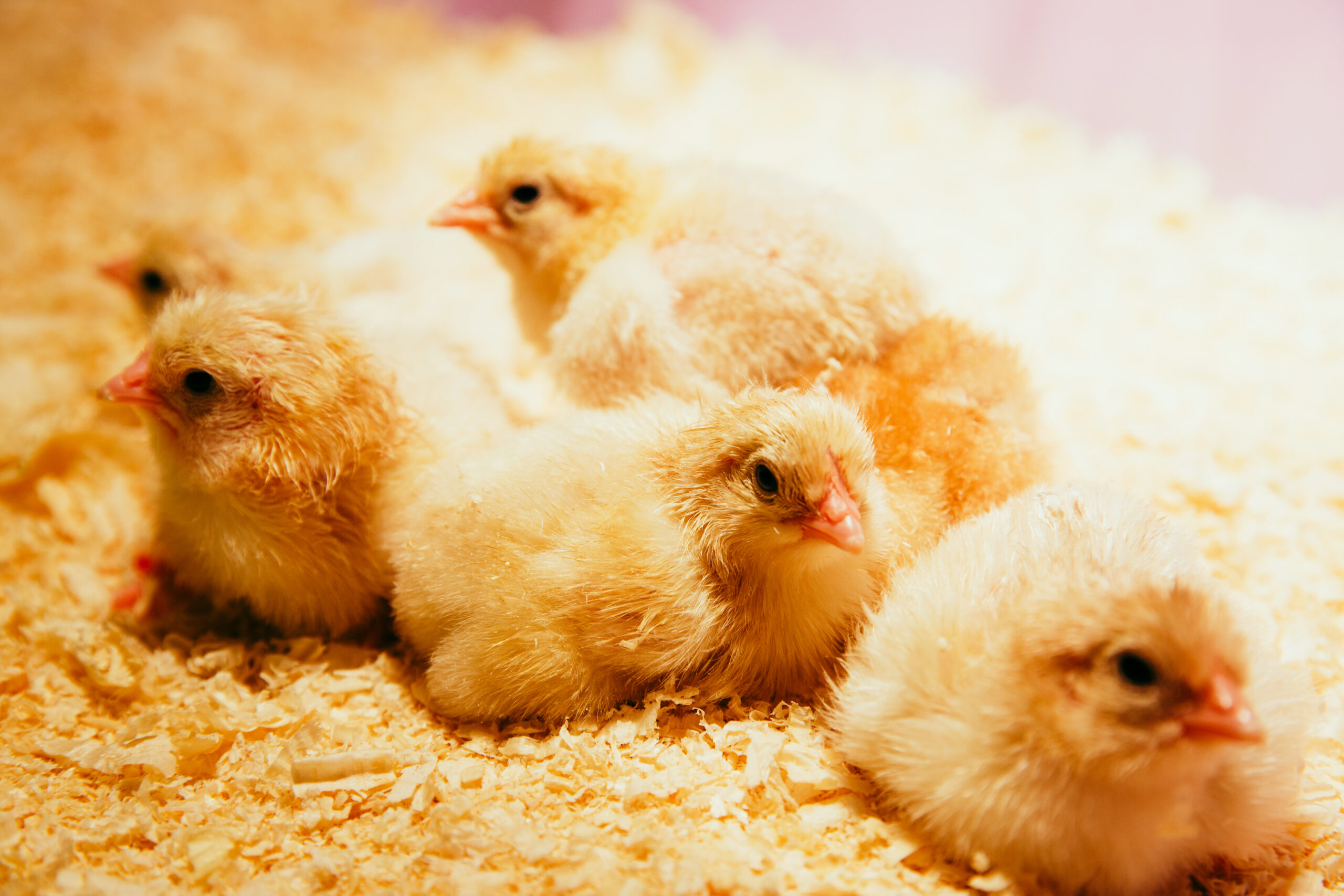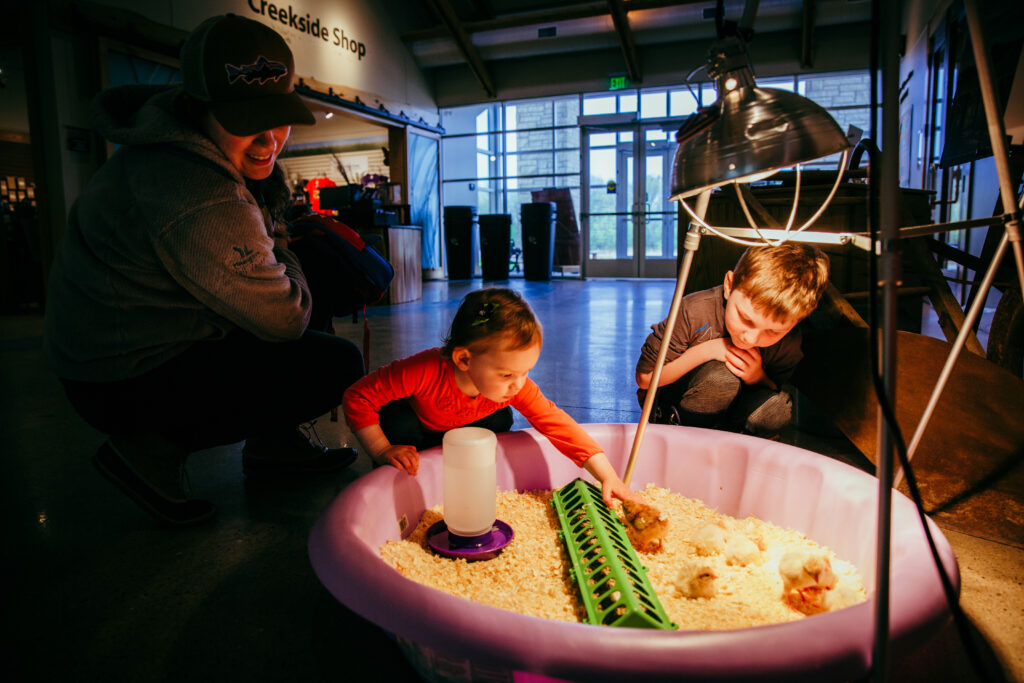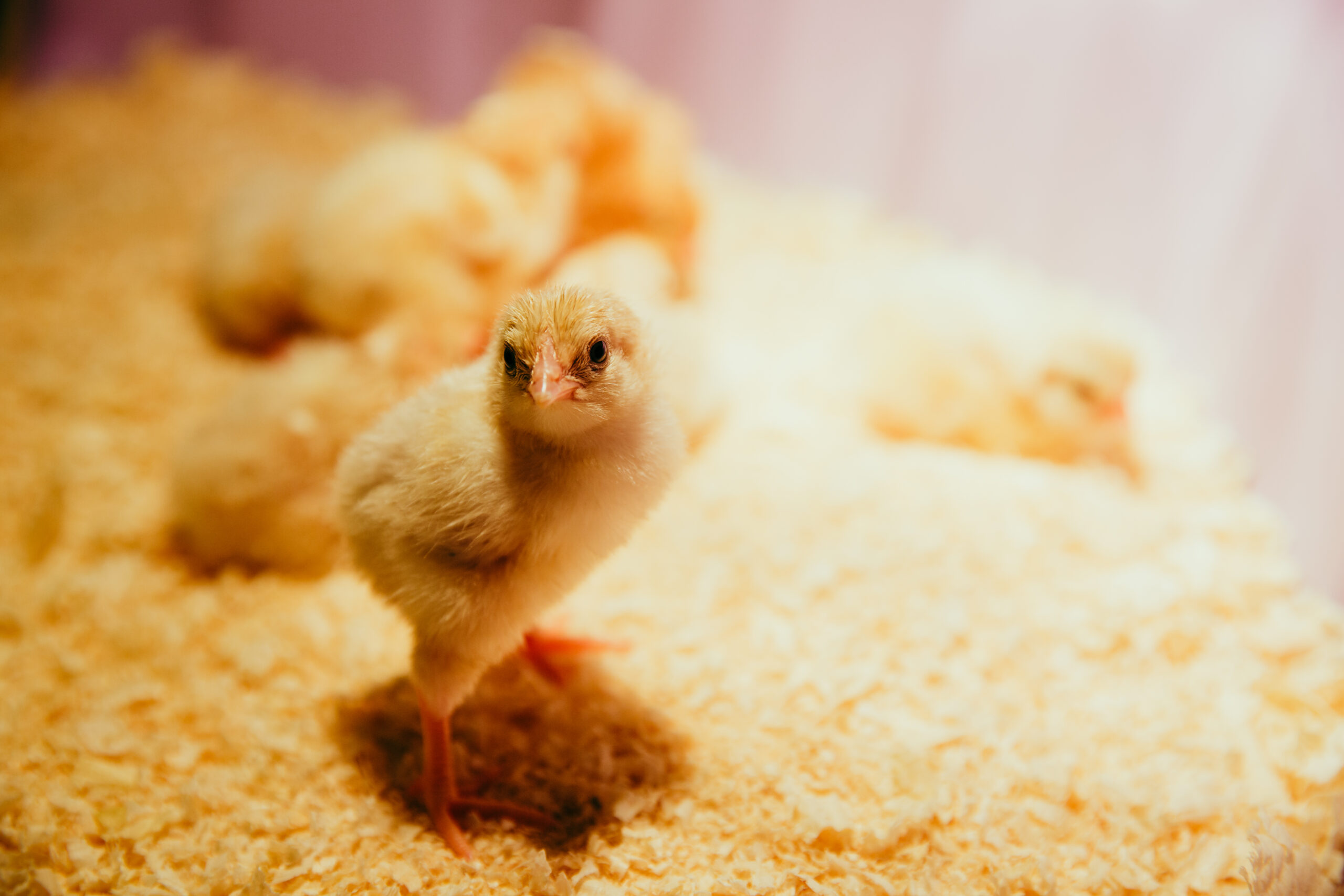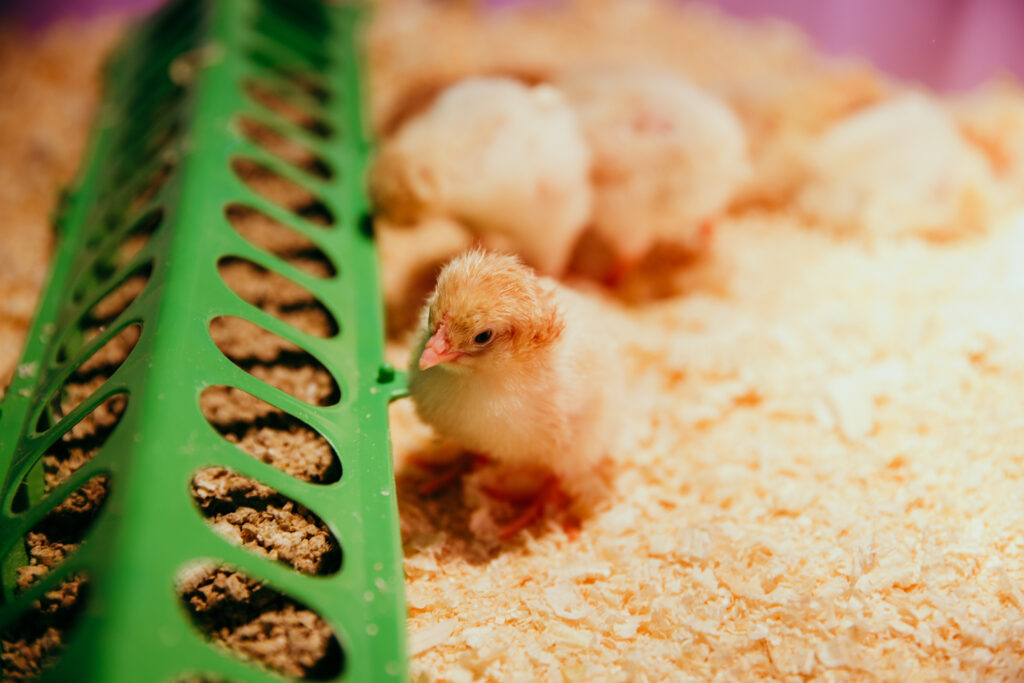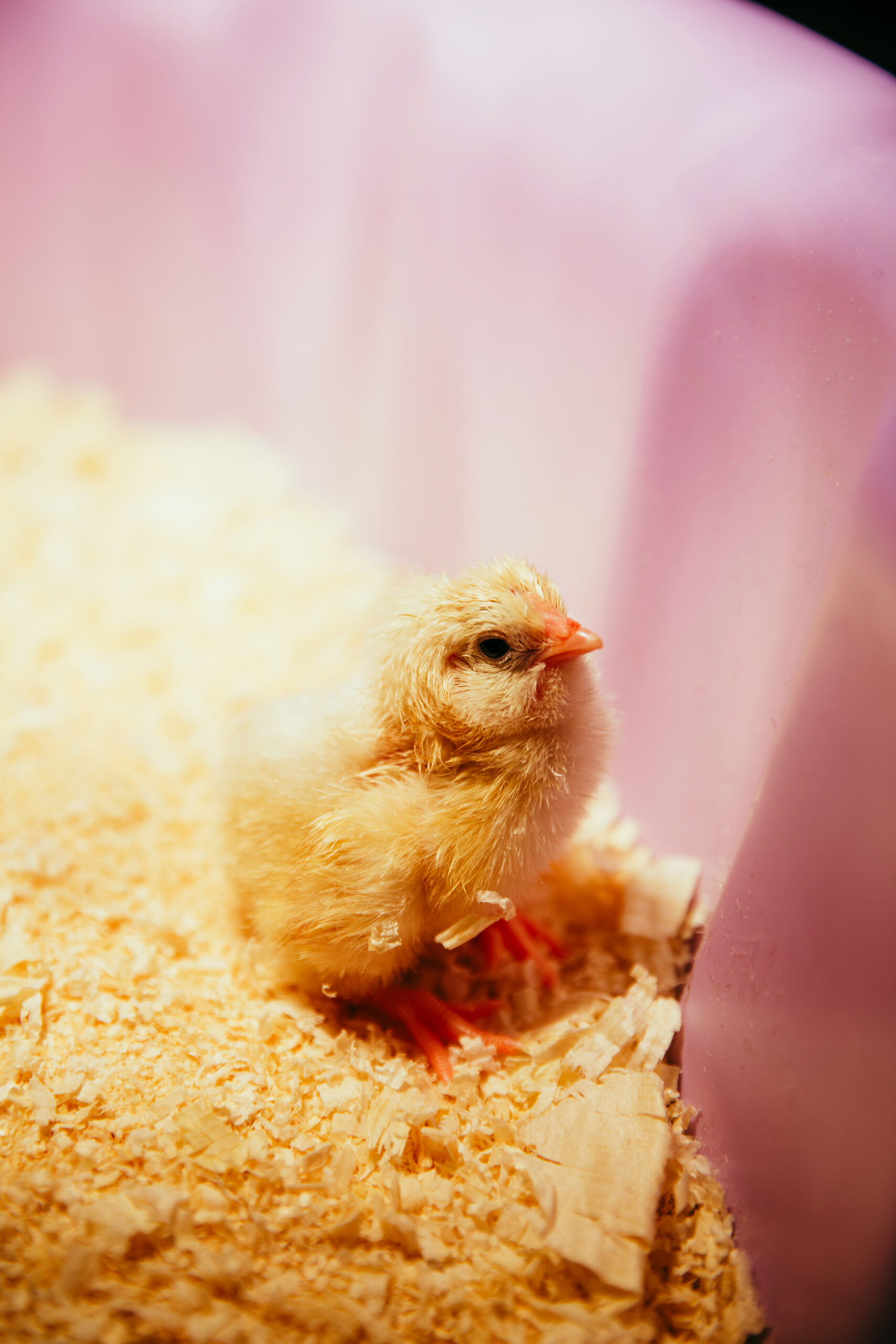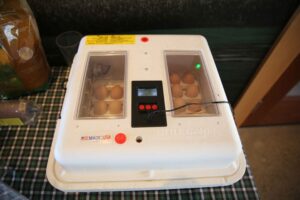
After a three year hiatus, the Hatch Chick Exhibit has returned to Amazing Space at Indian Creek Nature Center this spring. On April 6th, 40 fertilized Barred Rock eggs from Hoover’s Hatchery arrived, carefully packaged and temperature controlled for their journey from Rudd, IA and were placed inside the incubator in the Exhibit Hall. For the next 21 days the eggs will remain in the incubator where the humidity, temperature, and gentle movement of the tray will replicate the loving care of a broody hen.
To check for egg viability — and to feed our curiosities — Land & Farm Coordinator Sydney Foster will candle each of the 40 eggs twice over the next 21 days. The candling process is simple and harmless. It entails holding a special, very bright light under each egg in a dark room. At seven days and 14 days after incubation varying stages of development can be seen through the shell of the egg during the candling process. Think of it as the chicken version of an ultrasound. Like all eager parents, we’ll prepare the nursery while we wait. In this case, baby chicks will live in a brooder until they are old enough to go outside in their chicken coop with other adult hens.
Visit the Exhibit Hall to look inside our incubator and see what our brooder set up entails. You can also complete an entry in our log book, grab information about Hoover’s Hatchery and chick care, or give us some ideas to name our chicks!
On April 27th, give or take a day, the first pips are anticipated. By that time we’ll have removed the tray that gently moves the eggs and the temperature and humidity will be perfect for hatching. Eggshells are porous, so the humidity allows the chick to slide around easily inside the shell thanks to the moisture in the incubator. Remaining wet inside the shell is very important for the next step: pipping! Pipping, which is when the tiny chicks begin to use their beaks to break out of the shell, can last a few days. Each chick is born with a tiny hook, called an “egg tooth” that allows them to break through the shell more easily. That egg tooth makes a chicks’ beak look similar to a hawk’s beak, but eventually wears off after a few days.
Once the chicks have fully emerged from their shell, they are wet and tired. The incubator is still warm and the chicks will rest and nap inside it until they are fully dried. At various points throughout the day a trained ICNC staff member will remove chicks that are healthy and ready to leave the incubator. From here they’ll move to a brooder in the Amazing Space Exhibit Hall. Guests are welcome to visit the front desk, wash their hands and hold a chick while here. The brooder will have special food for chicks, water, and a heat source to keep the chicks warm. Just like many newborns, the chicks will sleep, poop, and eat a lot. Enjoy watching them snuggle each other or fall asleep in your hands!
Images from the 2019 Hatch Chicken Exhibit
After the chicks spend a few days living at the Nature Center, Sydney will take them to Etzel Sugar Grove Farm. They will then spend six weeks living in the coop brooder. This is a small room with heat panels that is separated from the rest of the flock. Because chickens aren’t able to regulate their temperature until they are fully feathered, it is very important to provide them with a heat source until six weeks even if they don’t use it all the time. Once the chicks are six weeks old, they should be fully feathered and ready to explore the outdoors.
At this time, the chicks are also ready to be introduced to the rest of the flock. This is usually a very exciting time as all of the chickens become acquainted with one another. They will still spend time apart from each other, but it is important to get them familiarized as they will soon be living together.
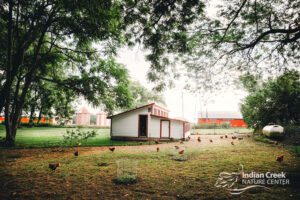
Once they reach 20 weeks, they are officially ready to join the flock. And around this time, they will start laying “fairy” eggs. At the age of 20 weeks, the chicken’s reproductive system is not yet fully developed, so the eggs they lay may be as small as quail eggs. But after a few weeks, they will lay full sized eggs perfect for eating.
Barred rock chickens are a great addition to any flock. They are very docile and are very productive egg layers, laying over 250 eggs a year! Barred Rock chickens have plumage consisting of regularly spaced, parallel bars of black and white. They have extremely fluffy feathers causing them to look much larger than they actually are. This is quite possibly one of the most popular chicken breeds out there, both for productivity and beauty. By the end of the year, the Barred Rock chicks that hatched at the nature center will be fully mature and laying an abundance of eggs. Our chickens are certified organic and pasture raised, meaning they have plenty of outdoor space to roam. Eggs by the dozen are available to purchase at the Creekside Shop at Indian Creek Nature Center.
Curious about raising your own chickens? Read about local ordinances and find certification classes on our Backyard Chickens page.

